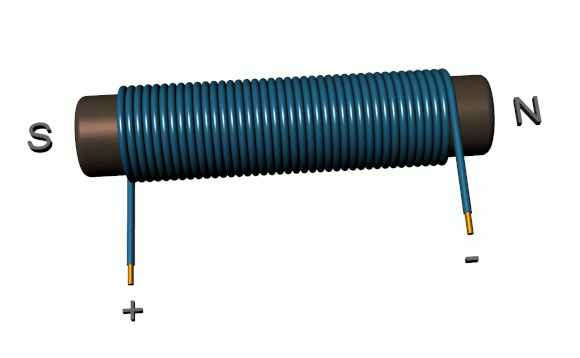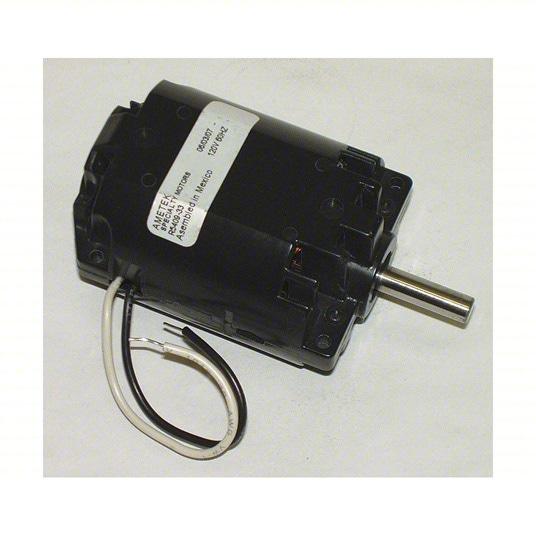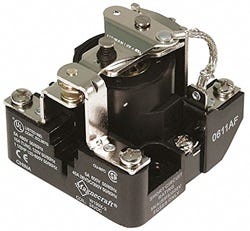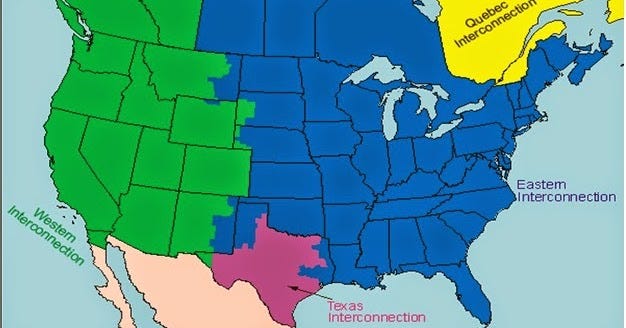Over the next few posts let’s talk about frequency, inertia, and the things that make the grid work. Without knowing where my readers knowledge is at, starting pretty simple. My apologies if this is redundant. So let’s start, let’s begin with a simple picture
.So, why the picture of the bar magnet, I thought we were talking about electricity? One thing we need to understand is that magnetism and electricity are forever connected at the hip. Without magnets, we would not have electricity. Where there are magnets, there are probably electric currents if you move the magnets at all. So, let’s discuss this very fundamental, but very important element of electricity.
First off, that bar magnet will always be a magnet, but we use electromagnetics in all kinds of devices. What is an electromagnet? See the picture below. It is a coil of wire around an iron core. When we pass a DC current through the coil of wire, we make a bar magnet, but when we turn off the current, the bar (should) just turns back into an iron bar and isn’t a magnet anymore. You do have to use the right type of iron, or you just magnetize the bar. (Yes, you can make your screwdriver a magnetic screwdriver this way. FYI use a 6-volt or 12-volt dry cell lantern battery if you are trying this at home.) If we were to apply 60Hz AC current to the coil, the polarity of the magnetic poles would switch 120 times a second, but yes, it would still make a magnet
Magnetic fields make any appliance with a motor run. So, your refrigerator, your freezer, your air conditioner, your furnace fan, your washer and dryer, your garage door opener, I could go on. They all need magnets to work. No magnets, you’re back to bashing cloths with a rock, and putting a block of ice in an ice box, you know that ice you cut out of the lake last winter. (Before we had motors, we used water wheels and steam engines to make rotary motion. Factories were a network of overhead shafts where flat belts took power off to individual machines.)
The convenience of remote controls, like thermostats, and a host of automatic controls require magnets. They almost always have a relay somewhere in their logic. Relays have magnetic coils to move contacts to turn things on and off. We have all heard the “click” when a relay turns on. Without magnetic relays we would not have automatic stuff.
The power that flows to your home flows through a transformer. The green box sometimes in your yard, or trash can shape device on the pole near your home. It changes the powerline voltage to house voltage, and it does it using magnetitic fields. The wires in the transformer that go to your home have no physical connection to the wires in the transformer that connect to the powerline. It all works based on the moving magnetic flux produced by alternating current. So, you are quite literally connected to the grid via a magnetitic field. When the power goes off, the magnetic field in the transformer goes away.
Let’s go back to the bar magnet, when you play with two bar magnets and hold opposite poles close together, they attract. However, you can hold them apart, and move them relative to each other, within limits. If you move too far the magnetic bond is broken and they are no longer attracted to each other. This is a good description of the electric grid. Each Interconnection is held together by magnet bonds. Those bonds are across transformers, across transmission lines, and substation buses. These magnetic bonds quite literally hold the grid together. This also means each Interconnection as a whole has some give and some flex, so it can absorb contingencies and stay together. But it has limits, and if you break the magnetic bond, bad things happen.
Next time we will talk about frequency and voltage. We will discuss field windings and how they are the basis of both. While you’re waiting, dig out your children’s magnets, play around a bit, think about the implications.










I always enjoy these 101 reviews!
A ;bit of a niggle, but there can be a wire connecting primary to secondary windings in a transformer. Sometimes, these are called auto-transformers. When these are used, there are important worker safety implications with respect to grounding.